The fairytale-like Glenveagh Castle in Donegal truly is a sight to behold.
Nestled on the glistening shores of Lough Veagh in the glorious Glenveagh National Park, the castle was built between 1867 – 1873.
In this guide, we take an in-depth look into the history of Glenveagh Castle along with everything you need to know for 2024.
Some quick need-to-knows about Glenveagh Castle
The Glenveagh Castle website is very confusing, so I gave them a call (March 2024) to check the details below:
1. Location
Glenveagh Castle is located on the shores of Lough Veagh in Glenveagh National Park. It’s a 25-minute drive from Gweedore, Dunfanaghy and Letterkenny Town.
2. Opening hours
The castle is open all year round. Here are the most recent opening hours:
- March – October: 09:15–17:15
- November – February: 10:00–17:15
3. The Glenveagh Castle tour
The Glenveagh Castle is now self-guided. Tickets cost €7 for an adult, €5 for a concession and €15 for a family ticket. The last tour takes place at 16:45.
4. Getting to the castle (walk or shuttle bus)
The walk from the car park to Glenveagh Castle is 4km and takes between 30-40 minutes and it’s well worth doing. If you’re stuck for time, a shuttle bus leaves every 20 minutes (roughly, according to the chap on the phone just now) and costs €3 for a return ticket.
The history of Glenveagh Castle
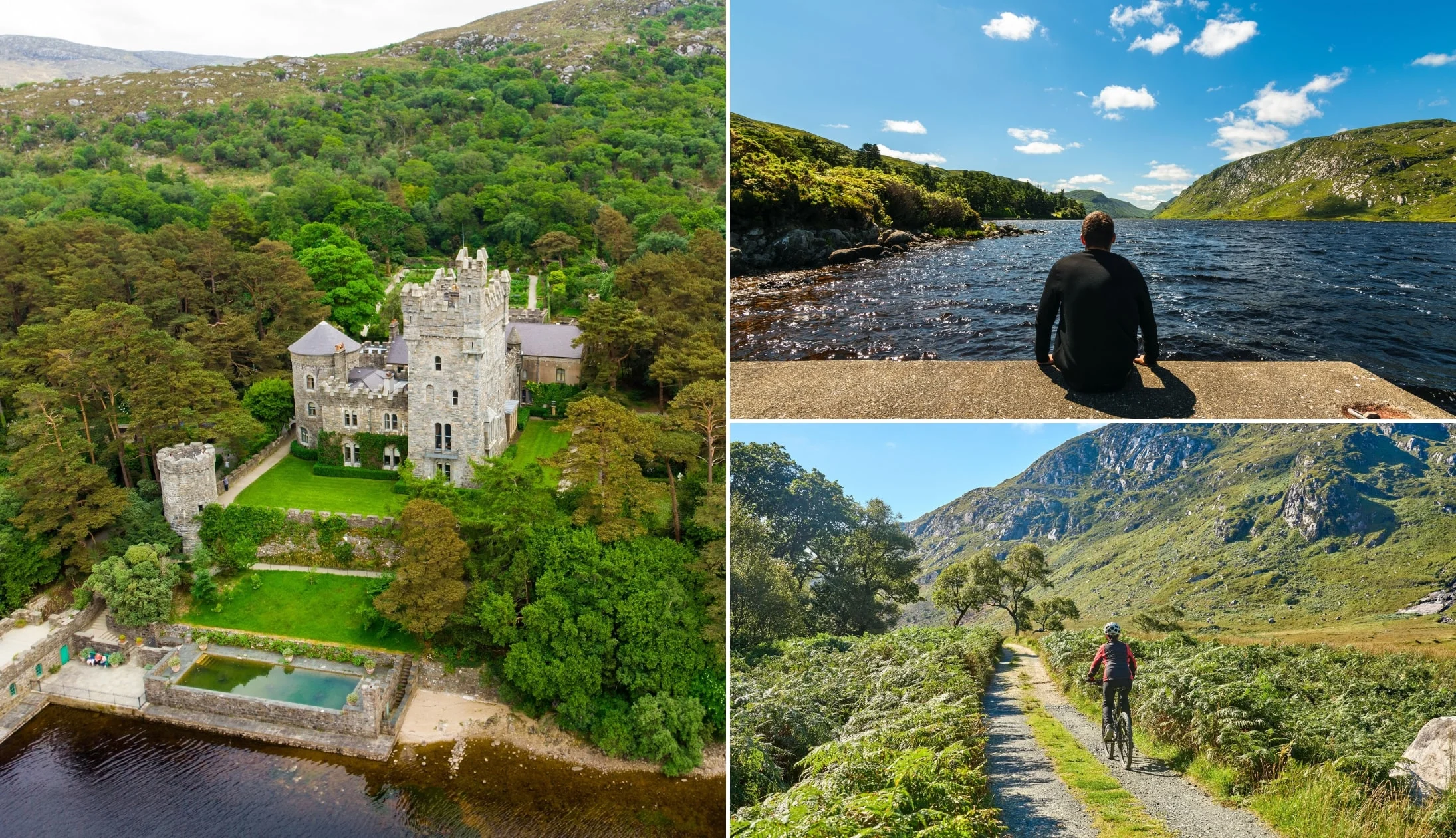
Photos via Shutterstock
A wealthy land speculator from Co. Laois called John George Adair initially purchased several small holdings between 1857-9, eventually establishing the estate of Glenveagh.
Adair would later incur infamy in Donegal and Ireland as a most hated landlord when he ruthlessly evicted 244 tenants from their homes in the Derryveagh Evictions.
Legend has it that one woman with 6 children ended up putting a curse on the castle so that anyone who owned it would never have children. The curse is believed to have come true as some owners never did.
The construction of the castle
After Adair married his American born wife Cornelia, he started constructing Glenveagh Castle. Construction began in 1867 and ended in 1873.
It was his dream to create a hunting estate in the highlands of Donegal but tragedy (or karma) would strike and he suddenly passed away in 1885.
Disaster at the castle
After his passing, Cornelia took over, introducing deer in the estate and continually making improvements to the castle, including laying out the impressive gardens.
After Cornelia’s passing in 1921, Glenveagh Castle fell into decay until it’s next owner Professor Arthur Kingsley Porter of Harvard University in 1929.
He initially came to Ireland to study Irish culture and archaeology however in 1933, while visiting Inishbofin Island, mysteriously disappeared.
Better times for Glenveagh
In 1937, Mr Henry McIlhenny of Philadelphia bought the estate, an Irish American who’s father grew up a few miles north of Glenveagh.
Mr McIllhenny devoted a lot of time improving the gardens and restoring Glenveagh National Park Castle.
In 1975, Mr McIllhenny sold the estate to the Office of Public Works which allowed the creation of Glenveagh National Park, and in 1983, Glenveagh Castle was bestowed to the nation, with the National Park opening to the public a year later and the castle in 1986.
The Glenveagh Castle tour
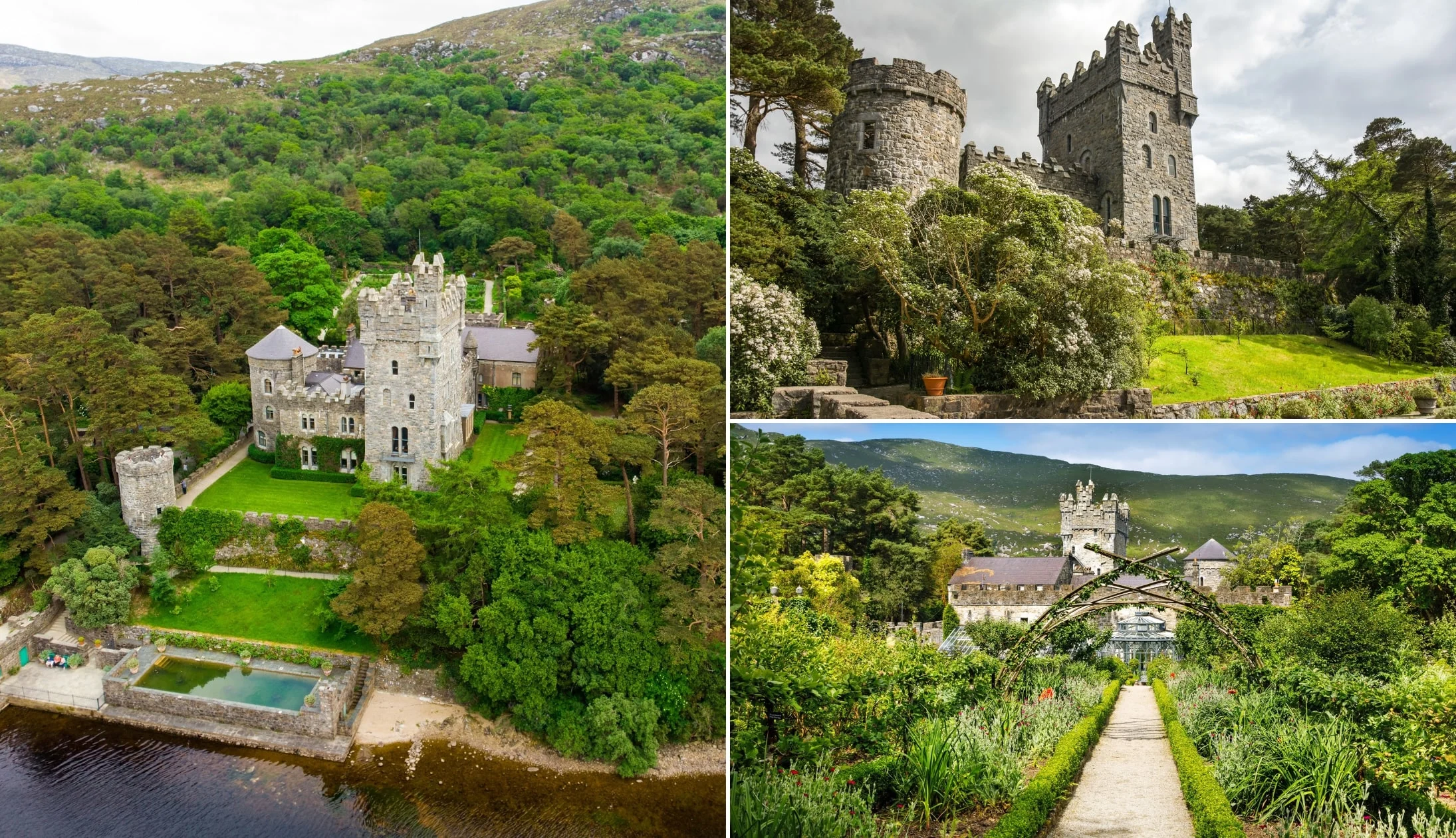
Photos via Shutterstock
The Glenveagh Castle tour will immerse you in one of the most impressive castles in Ireland. Now, note that the tour has changed quite a bit in recent years, moving from a guided to a self-guided format.
There are pros and cons to this – the main con being the lack of narration. It’s for that reason that I’d recommend reading up on the history of Glenveagh Castle before you take the 45-minute tour.
As you explore the castle, you’ll take a step back in time, entering sections of Glenveagh that feel like they’ve been untouched for hundreds of year.
One interesting bit of trivia about Glenveagh is that the castle once hosted Marilyn Monroe and John Wayne.
Places to visit near Glenveagh Castle
One of the beauties of Glenveagh Castle is that it’s a short spin away from many of the best places to visit in Donegal.
Below, you’ll find a handful of things to see and do a stone’s throw from the castle and park!
1. Walks galore
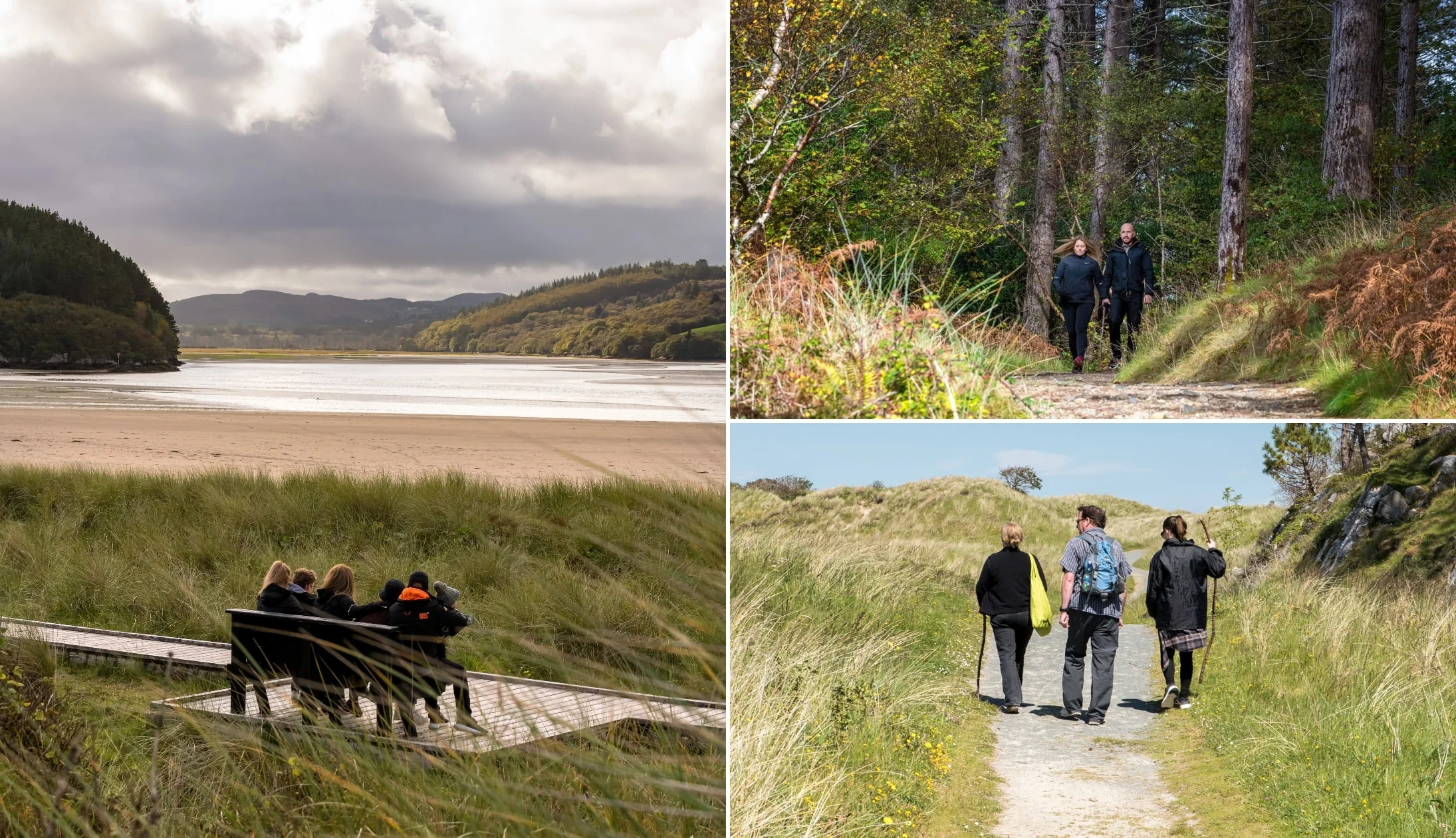
Photos courtesy of Gareth Wray Photograph
So, there’s heaps of walks in Donegal and, as it happens, many are in and around Glenveagh Castle. The most convenient are the walks in Glenveagh Park, which range from handy to hard. There’s also the Mount Errigal hike (it’s a 15-minute drive from the park to the starting point), Ards Forest Park (20-minute drive) and Horn Head (30-minute drive).
2. Beaches
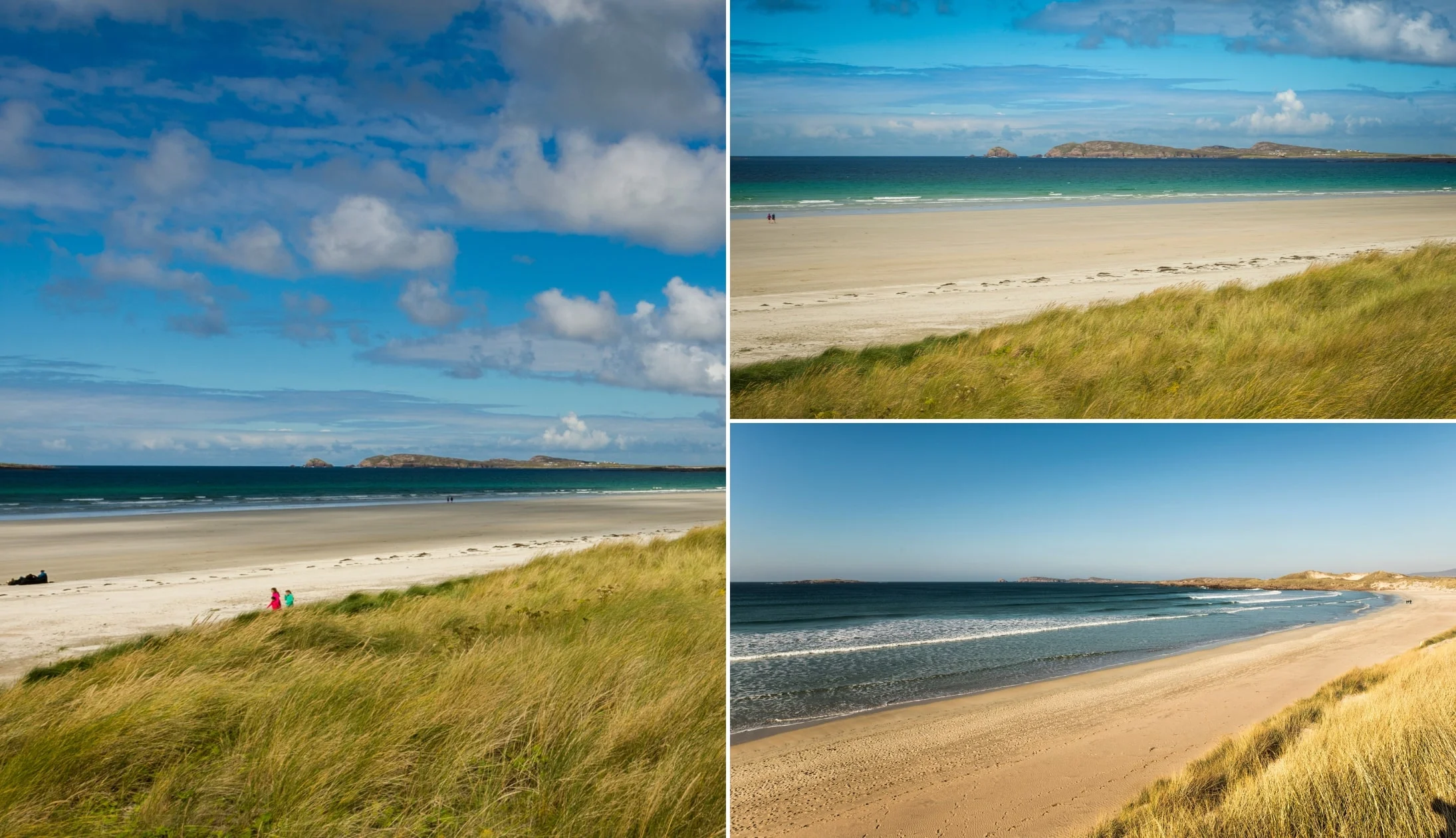
Photos via Shutterstock
There’s some mighty beaches in Donegal and you’ll find some of the best a short spin from Glenveagh Castle. Marble Hill (20-minute drive), Killahoey Beach (25-minute drive) and Tra na Rossan (35-minute drive) are all worth checking out.
3. Post-walk feed
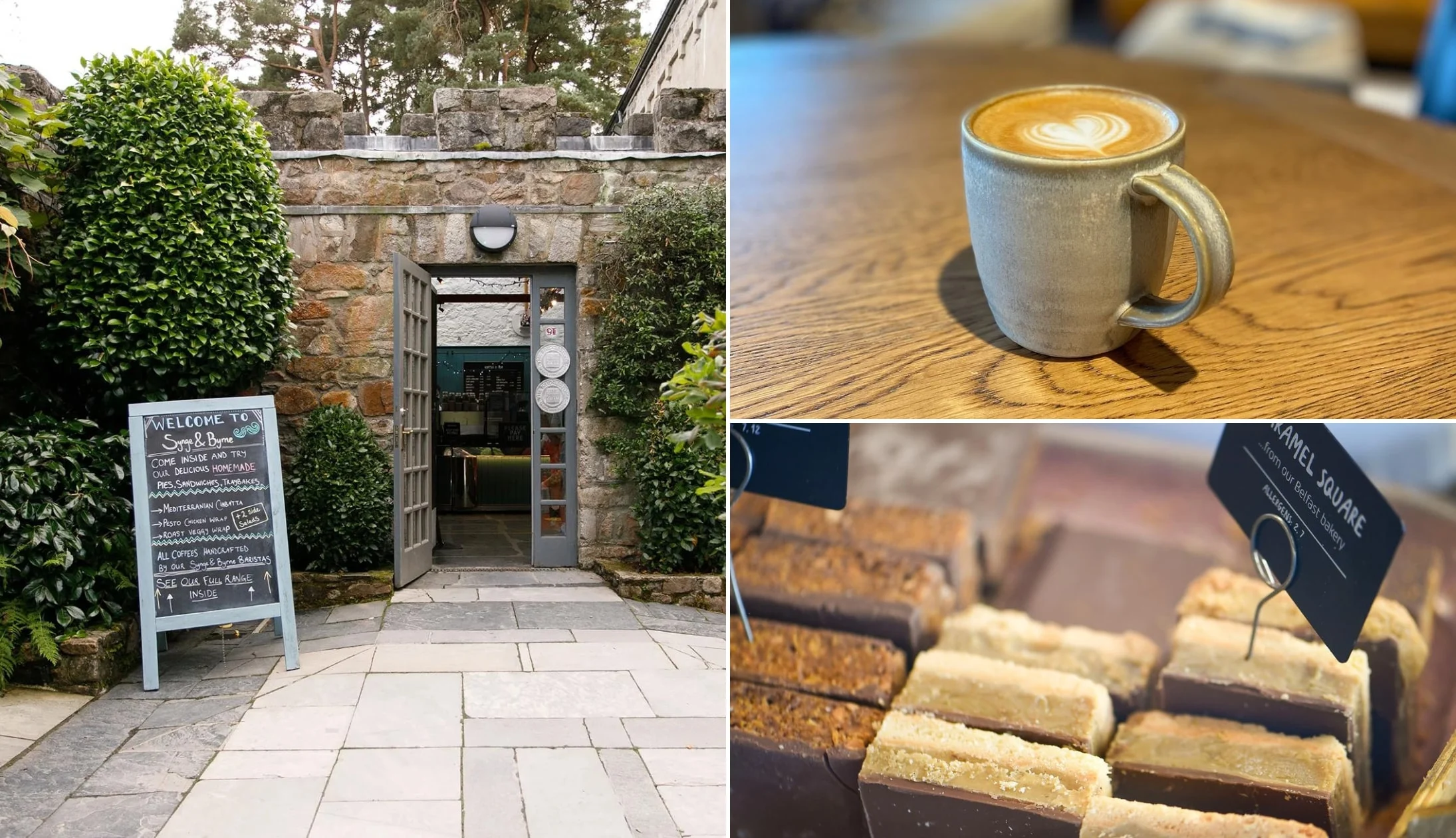
Photos via Synge & Byrne on FB
The buzzy town of Letterkenny is just 25 minutes down the road from Glenveagh Castle and the park. You’ll find plenty of things to do in Letterkenny along with plenty of places to kick back in with a fine feed. See our guides to the best restaurants in Letterkenny and the best pubs in Letterkenny for more info.
FAQs About Glenveagh Castle
We’ve had a lot of questions over the years asking about everything from the Glenveagh Castle Gardens to the tour.
In the section below, we’ve popped in the most FAQs that we’ve received. If you have a question that we haven’t tackled, ask away in the comments section below.
Is Glenveagh Castle worth visiting?
The ancient Glenveagh Castle boasts a setting that few castles in Ireland can contend with. It’s perched on the shores of Lough Veagh in the magnificent Glenveagh National Park. A visit rarely disappoints.
How much are the Glenveagh Castle tickets?
As per 2024, admission to Glenveagh Castle is €7 for an adult, €5 for a concession and €15 for a family ticket. The last tour takes place at 16:45.


